This op-ed was originally published by Quartz.
Last month Benin president Patrice Talon shook the establishment table of France-Africa relations when he said in an interview the Francophone nations in West Africa want take more control over their CFA franc currency and plan to move some of their reserves away from France.
“Psychologically, with regards to the vision of sovereignty and managing your own money, it’s not good that this model continues,” he is reported to have told Radio France Internationale.
But while Talon’s comments was a something of a surprise, it was no longer a shock. Where once the idea of questioning the status of the France-backed CFA franc seemed heresy, discussions around its future are becoming more common both from grassroots activists and in offices of African governments and opposition leaders.
Earlier this year, Luigi Di Maio, Italy’s former deputy prime minister and current minister of foreign affairs, revived the controversy about the role of the CFA franc on Africa’s development with a provocative statement: “France is one of those countries that by printing money for 14 African states prevents their economic development and contributes to the fact that the refugees leave and then die in the sea or arrive on our coasts.”
Although President Emmanuel Macron of France said he would “not respond” to the statement, he did note that in the past “France will go along with the solution put forward by your [African] leaders.” The statement, however, has brought into question the CFA franc currency zone, the relations between the 14 countries within the CFA zone and France, and their impact on economic and development performance.
There is also a clear divergence in opinion among African leaders using the currency. In a recent trip to France, President Alassane Ouattara of Cote d’Ivoire qualified the discussion about the CFA franc as a “false debate,” considering that the currency is “solid and well-managed” as well as “stabilizing” African economies.
But Chad’s President Idriss Debby said back in 2015 he considers the CFA as “pulling African economies down,” and that “time has come to cut the cordon that prevent Africa to develop.” He called for a restructuring of the currency in order to “enable African countries which are still using it to develop.”
In my book “Innovating Development strategies in Africa: The Role of International, Regional, and National Actors,” I examine the political economy of the performance and economic development strategies of the countries in the CFA franc zone from 1960 to 2010. Building on it and additional research, it is important to address this debate dispassionately with impartial analysis of how the CFA works, the arguments of its supporters and opponents both academically and politically, its broader impact on economic performance, and the options ahead.
The origin story
The CFA franc was created in December 1945 when the French government ratified the Bretton Woods Agreement and became the currency of les colonies françaises de l’Afrique or the CFA (“French Colonies of Africa”). The French Treasury guaranteed the currency under a fixed exchange rate dependent on the deposit of 50% of CFA franc reserves into the French central bank. The CFA was later split into the Communauté Financière d’Afrique (“Financial Community of Africa”), which included the West African countries Benin, Burkina Faso, Côte d’Ivoire, Guinea-Bissau, Mali, Niger, Senegal, and Togo and the Communauté Financière de l’Afrique Centrale (“Financial Community of Central Africa”) including Cameroon, the Central African Republic, Chad, the Republic of the Congo, Equatorial Guinea, and Gabon.
The Central Bank of West African States and the Bank of Central African States are responsible for coordinating monetary exchanges through operating accounts with the French Treasury. These accounts operate according to several rules, including:
- Each central bank must maintain at least 50% of foreign assets with the French Treasury.
- Foreign exchange cover of at least 20% should be maintained for “sight liabilities.”
- Each government is limited to a ceiling of 20% of that country’s revenue from the previous year.
The CFA franc monetary system is designed to guarantee the franc currency in international markets, while simultaneously preventing overdraft and inflation in CFA member countries. Between the early 1950s and the mid-1980s, CFA franc countries had stronger real GDP growth and lower inflation than other sub-Saharan African countries. For example, within the past 50 years, Côte d’Ivoire experienced an average inflation rate of 6%—a much lower rate than its neighbor Ghana, which averaged 29% inflation.
From 1960 to 1978, Cote d’Ivoire averaged an annual GDP growth rate of 9.5%, which then stagnated, while Ghana’s GDP responded positively to structural adjustment programs in the 1980s. Cote d’Ivoire, among other CFA countries, did not respond immediately to structural adjustment programs. Strong growth and low inflation from the early independence period did not survive the economic shocks of 1986 to 1993, and the CFA became significantly overvalued and subject to increasing deficits in the French Treasury’s operations accounts. Domestic production lapsed, and African countries increasingly relied on imported materials. CFA countries’ public debt increased and central banks exceeded statutory ceilings, leading to significant fiscal imbalances.
In 1994, France devalued the CFA franc, raising the parity rate from 50 CFA francs per French franc to 100 CFA francs per French franc. CFA member countries’ governments imposed wage freezes and layoffs in the wake of the CFA devaluation, leading to widespread unrest over inaccessible goods for consumers and unmanageable price controls for suppliers.
Then Senegalese president Abdou Diouf had promised citizens during his 1993 campaign that franc would not be devalued. So in 1994 thousands of demonstrators responded to this broken promise as many suffered the effects of France bowing to Western pressure to increase the CFA franc’s parity rate. Just one month before the devaluation, Michel Roussin, the French Cooperation Minister, had said there was no chance at devaluing the CFA Franc because France was “very attached to the Franc Zone.”
Growing debates
The challenge of implementing effective monetary policies for growth and stability throughout Africa has led to years of debate over the CFA franc zone. Many European and African leaders have supported its continuation, while others seek separation between France, the European Union, and Francophone African countries.
The debates over the CFA franc often begin with the question of exchange rates and devaluation. Studies have shown that the CFA franc’s convertibility at a fixed exchange rate was the impetus for the 1994 devaluation; an average of 730 million French francs was being converted each month before 1992, which was a massive increase from the less than 284 million French francs converted monthly before 1984.
Monetary policies that were effective in achieving real exchange rate depreciation also resulted in a reduction in government expenditures and a decline in investment. As a positive effect, the unlimited convertibility of the CFA franc to the euro has generally reduced the risk of foreign investment in CFA countries. However, foreign investment in CFA countries remains low relative to other emerging economies, such as the BRICS economies that include South Africa.
Guinea, which has its own currency, still stands as an example for supporters of the CFA zone. Guinea frequently experiences currency shortages and its central bank does not have sufficient policies to ensure stability, so the CFA zone is presented as a solution to instability in this particular case.
Côte d’Ivoire President Alassane Ouattara has in the recent past contended that CFA zone countries are better off than Anglophone countries due to growth and low inflation, whereas the poor are disproportionately affected by unpredictable inflation in Anglophone countries. What is rarely discussed is that similar or better outcomes could be achieved with other policy options.
In terms of trade, the CFA’s fixed exchange rate to the euro has led to a greater facilitation of trade through the reduction of uncertainty and stabilization of domestic prices. The logic of fixed exchange rates traces back to the Bretton Woods period when 63% of developing countries had their currency pegged to that of an industrial country.
The potential problems with a fixed exchange rate are mostly offset in Central African Economic and Monetary Union (CAEMU) countries, due to these countries’ high levels of excess liquidity from oil revenues. However, West African Economic and Monetary Union (WAEMU) countries have experienced declining liquidity since 2004, thus suffering from the volatility of a fixed rate amidst external shocks.
Ideally, countries in the same monetary union should coordinate member countries’ fiscal policies to offset shocks in different parts of the union. However, no such coordination occurs in the CFA zone.
The CFA franc zone as a whole has thus resulted in:
- Limited intra-regional trade, especially in Central Africa.
- High dependence on producing and exporting a limited number of primary commodities.
- A narrow industrial base.
- A high vulnerability to external shocks.
A focus on primary commodities and limited intra-regional trade are broadly reflective of CFA franc member countries’ lack of export diversification and low industrialization. Intra-regional trade accounted for about 11% of total external trade of WAEMU countries, 6% of CAEMU countries, and only 9% of all CFA countries’ total external trade.
The French government again considered devaluation in 2012, which, while disregarded as a rumor, was assumed to be a method of safeguarding the euro and maintaining France’s credit rating. The CFA franc’s exchange rate could thus become a pawn in international markets to the detriment of CFA economies. In 2014, a drop in oil prices increased fiscal and current-account deficits within the monetary zone. Though, African leaders agreed to IMF-supported programs that inspired spending cuts to remedy the deficits instead of changing the exchange rate. This adamant support for the CFA franc’s peg to the Euro challenges the perspective that only European leaders support the fixed rate of CFA francs to Euros.
Debates over the persistence of the CFA franc zone also focus on African states’ independence and sovereignty. Large numbers of unemployed youth throughout sub-Saharan Africa—which may reach over 350 million over the next two decades—are often the loudest opponents of the CFA zone. Other pro-democracy movements, like Y’en a Marre in Senegal and Le Balai Citoyen in Burkina Faso, consider the dismantling of the CFA zone as essential to their campaigns to reform their countries’ respective governments. Other protests have included Kemi Seba, the Benin-born French activist who was charged with burning CFA notes in Senegal before being deported.
Some African economists consider the broader dependency on European monetary policies as a restriction to growth due to a hyper-fixation on inflation. However, African elite and wealthy individuals, the primary beneficiaries of the CFA franc zone configuration, support its continuation. Thus, debates will continue within the various dimensions of class, power, and politics.
The future
Scholars and policymakers have proposed several options to improve the viability of the CFA franc or replace the currency. Each option has advocates and opponents because the different policies target distinct challenges, such as exchange rate independence, inflation control, GDP-growth incentives, and capital mobility. The four most prominent options are to:
- Tie the CFA franc to a basket of currencies, such as the dollar and the yuan. Pegging the CFA franc to multiple currencies will increase the relative stability of the currency in the event of exchange rate fluctuations of any of WAEMU or CAEMU’s trading partners. A basket peg based on an import-weighted index, as proposed by Crokett and Nsouli (1977), has also been evidenced to be more beneficial for developing countries. An import-weighted index would be most beneficial for WAEMU due to its high levels of import diversification, while a different configuration, such as an export-weighted index, a bilateral trade index, or an index based on the SDR (special drawing rights) might be more appropriate for the CAEMU zone that is highly focused on primary commodities. Though, in general, severe depreciation of basket currencies would have much graver effects on countries that mainly export primary products, such as CFA countries.
- Restructure the reserve requirements for CFA franc countries. Higher levels of reserves will ensure the convertibility of the CFA franc, which is currently threatened by changing French and European fiscal policies. This option could be considered a short-term strategy, or precursor to other strategies that may lead to greater monetary independence for CFA countries. However, in many CFA member countries, high reserves are derived from natural resource revenues, which are subject to changes in world prices and difficult to accommodate in the short-term.
- Separate WAEMU and CAEMU into optimum currency areas. Optimum currency areas (OCA) have the benefits of high factor mobility, economic interdependence, sectoral diversification, and wage and price flexibility. The challenge is to support the costs related to the establishment of OCAs and ensure the establishment and compliance of uniform regulations. Though undoubtedly difficult to implement, this configuration could likely benefit both monetary unions because member states’ fiscal policies will be easier to coordinate within a similar regional context. Some research suggests West African CFA members of ECOWAS, the Economic Community of West African States, are already primed to become an OCA because these countries are best suited to integrate their real exchange rates. Although ECOWAS is mulling the launch of “Eco,” a new currency to be used by its 15 member states including Nigeria, Aloysius Uche Ordu, former vice president of the African Development Bank, recently evaluated its prospects and argues launching Eco by January 2020 “is, at best, an expensive distraction that the people of West Africa can ill afford at this particular moment”.
- The establishment of the African Monetary Union. An African Monetary Union would be most challenging to implement and require countries to adhere to strict fiscal rules similar to the CFA zone until stability was achieved. This strategy requires significant investment and capital mobility to ensure a strong exchange rate union and currency convertibility. Movement of labor and capital are necessary to spur economic growth and stabilize relatively different economies. The appeal of an integrated African Monetary Union is the tremendous potential to increase intra-regional trade and encourage domestic production capabilities. However, another monetary union may lead to similar problems of dependence as the CFA franc zone.
Overall, policymakers from the CFA franc zone should analyze the various options to determine a short-term and long-term plan that will increase growth and lead to equitable development of countries that are at different stages. African and European leaders must be resolute and accountable to the various interest groups throughout their two continents.
Any restructuring of the CFA franc will have drastic macroeconomic effects that will require an increase in public investment and provision of public goods, attractive investment policies, development aid, and resource mobilization. The future of the CFA franc is yet to be determined, but it deserves comprehensive, sensitive analysis.
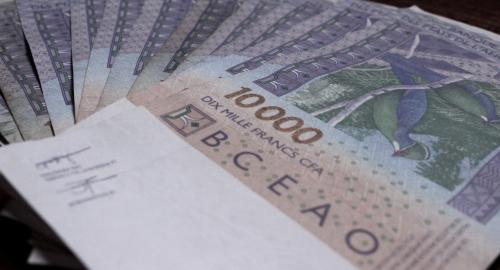
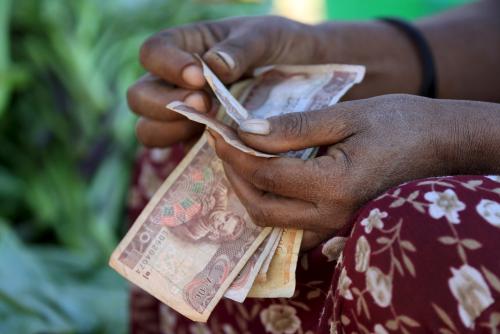
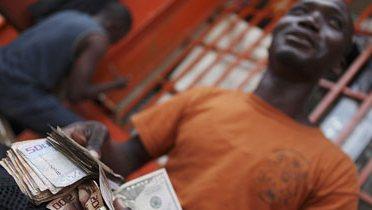
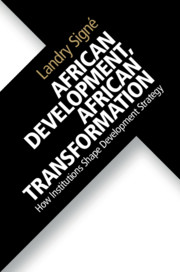
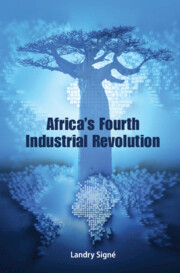
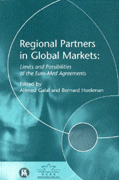




Commentary
Op-edHow the France-backed African CFA franc works as an enabler and barrier to development
December 7, 2019